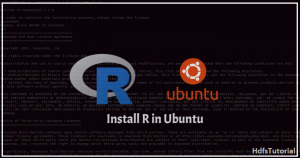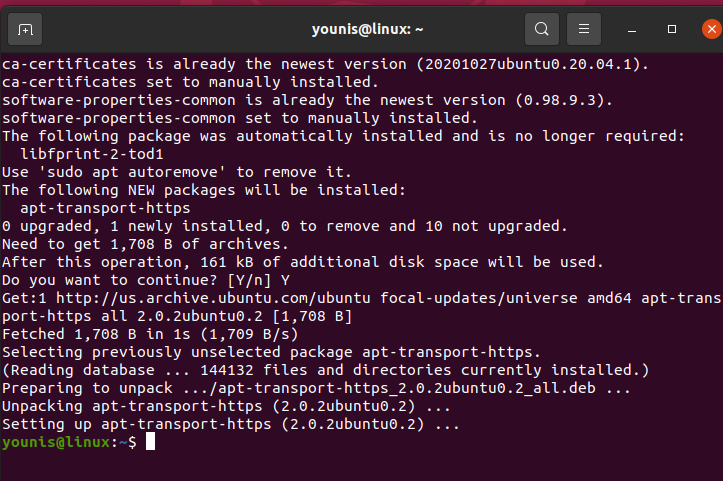

- #INSTALL RSTUDIO UBUNTU INSTALL#
- #INSTALL RSTUDIO UBUNTU UPDATE#
- #INSTALL RSTUDIO UBUNTU CODE#
- #INSTALL RSTUDIO UBUNTU DOWNLOAD#
In order to access Rstudio server point your web browser to and then sign in with the credentials of the user. # firewall-cmd –reload Step 5: Using RStudio Web Console # firewall-cmd -permanent -zone=public -add-port=8787/tcp To allow the port run the command below on your RHEL-7/RHEL-8 system. RStudio service listens on port 8787, so make sure its its allowed in your firewall. To do so, run the command below to start the RStudio service. Now we have installed RStudio on our system, next we need to make sure that its service is up and running so that we can access it and start using it. # dpkg -i b Step 4: Starting RStudio Services in Linux
#INSTALL RSTUDIO UBUNTU INSTALL#
Once downloaded, install it using the ‘rpm’ command in the case of RHEL based OS and use ‘dpkg’ if you are using Ubuntu. Make sure to choose the right package for the system you are using.
#INSTALL RSTUDIO UBUNTU DOWNLOAD#
Get it on your system whether upload or use the below command to download on your system. Let’s start the installation of RStudio, which is an Integrated Development Environment for working with R using its web console.ĭownload the RStudio Free Version for your OS from their official web link which is

Using the R in your terminal, you will be directed to its R console where you will be able to run its commands as per your own use as shown in the above command’s output. Options –arch, –no-environ, –no-init-file, –no-site-file and –vanillaĬan be placed between R and CMD, to apply to R processes run by ‘command’ Please use ‘R CMD command –help’ to obtain further information about Rtags Create Emacs-style tag files from C, R, and Rd files
#INSTALL RSTUDIO UBUNTU UPDATE#
Javareconf Update the Java configuration variables
#INSTALL RSTUDIO UBUNTU CODE#
Stangle Extract S/R code from Sweave documentationĬonfig Obtain configuration information about R

Rdconv Convert Rd format to various other formats LINK Front-end for creating executable programs

SHLIB Build shared library for dynamic loading f FILE, –file=FILE Take input from ‘FILE’įILE may contain spaces but not shell metacharacters. g TYPE, –gui=TYPE Use TYPE as GUI possible values are ‘X11’ (default) –debugger-args=ARGS Pass ARGS as arguments to the debugger d, –debugger=NAME Run R through debugger NAME –verbose Print more information about progress –interactive Force an interactive session –min-vsize=N Set vector heap minimum to N bytes ‘4M’ = 4 MegaB –min-nsize=N Set min number of fixed size obj’s (“cons cells”) to N –max-ppsize=N Set max size of protect stack to N –no-readline Don’t use readline for command-line editing –vanilla Combine –no-save, –no-restore, –no-site-file, –no-restore-history Don’t restore the R history file –no-restore-data Don’t restore previously saved objects –restore Do restore previously saved objects at startup –no-init-file Don’t read the user R profile –no-site-file Don’t read the site-wide Rprofile –no-environ Don’t read the site and user environment files –save Do save workspace at the end of the session RHOME Print path to R home directory and exit –encoding=ENC Specify encoding to be used for stdin h, –help Print short help message and exit Specified options, or invoke an R tool via the ‘R CMD’ interface. Start R, a system for statistical computation and graphics, with the To get a list of command-line options, run this command: # R -help R is a command-line utility as discussed above for data analysis. Once the installation is complete, check its version using the command as shown below. Those using Ubuntu can use the apt-get command as below. Run the command below if you are using an RHEL based OS. Step 1: Installing R Package in Linuxįirst of all, we need to install the R package, which is available in the default repository of RHEL/CentOS and Ubuntu. You need to have your Linux system ready with a user with sudo rights along with access to the internet for getting the required packages. Prerequisitesīefore moving to the R and RStudio installation, we need to make sure of some basic things for the smooth run. RStudio is an Open Source and free-to-use integrated development environment (IDE) for R. R is a programming language that is mostly used for statistical computing, data mining, and graphics.


 0 kommentar(er)
0 kommentar(er)
